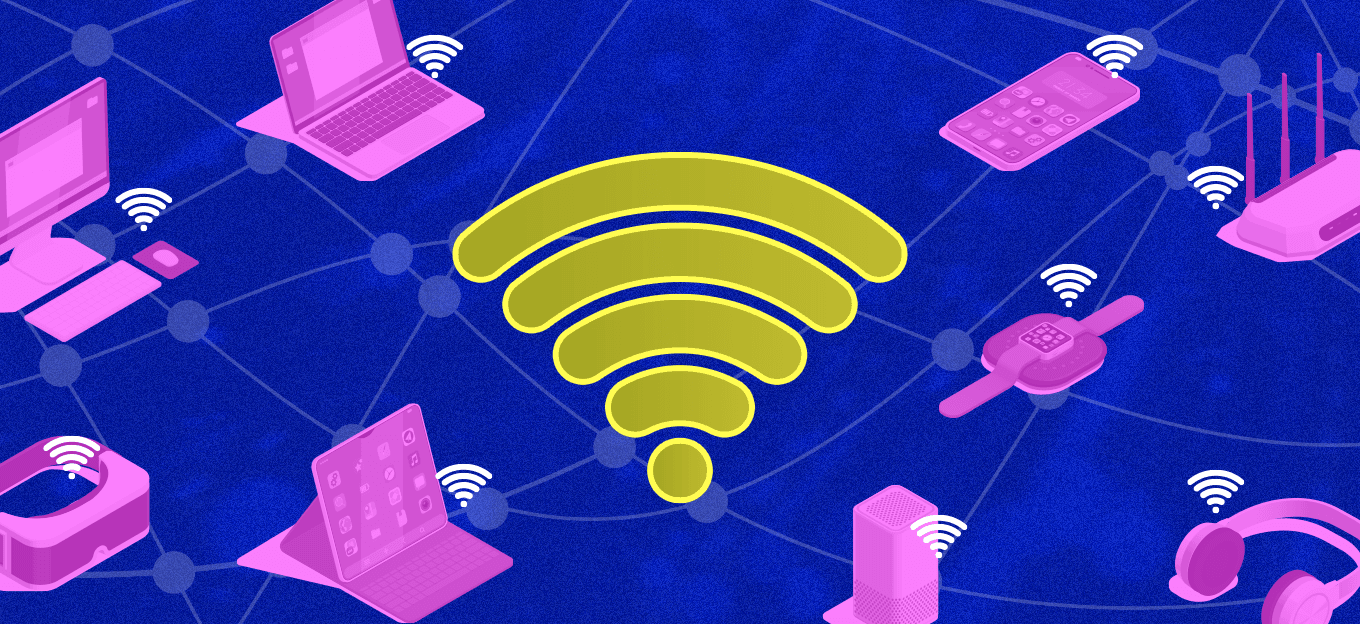Wireless Sensors for IoT
Wireless Sensors for IoT
- Last Updated: April 19, 2025
MultiTech
- Last Updated: April 19, 2025



The Internet of Things (IoT) is going to change our world. It is estimated that there will be nearly 22 billion IoT devices by 2025. Extending internet connectivity to everyday objects will transform industries and create tremendous cost savings. But how do non-internet-enabled devices gain connectivity capabilities through wireless sensors?
With wireless sensors, IoT is possible. Individuals and organizations can use wireless sensors to enable many different kinds of smart applications. From interconnected homes to smart cities, wireless sensors create the infrastructure upon which IoT comes alive. Understanding how wireless sensor technology works is crucial for anyone who intends to deploy IoT applications in the future. Let's look at how wireless sensors work, emerging wireless standards for sensors, and what role they will play in the future.
'Understanding how wireless sensors work is crucial for anyone who intends to deploy IoT applications in the future.' -MultiTech
What is a Wireless Sensor?
A wireless sensor is a device that can gather sensory information and detect changes in local environments. Examples of wireless sensors include proximity sensors, movement sensors, temperature sensors, and liquid sensors. Wireless sensors don’t perform heavy data processing locally, they consume very little power, and can last years on a single battery if an optimal wireless technology is used. Additionally, sensors are easily supported on low-speed networks as they transmit very light data loads.
Wireless sensors can be grouped to monitor environmental conditions throughout a region. These wireless sensor networks consist of many spatially-dispersed sensors that communicate through wireless connections. Sensors in a common network share data either through nodes that consolidate information at a gateway or where each sensor connects directly to the gateway, assuming it can achieve the necessary range. Gateways act as bridges that connect local sensors to the internet, functioning both as routers and wireless access points.
Types of Wireless Network Topologies
Wireless sensor networks are typically arranged in a few different topologies. The most commonly used to support wireless sensor technology are the star and mesh topologies.
#1: Star Topologies
Star topologies are those in which every node is directly connected to a central hub or gateway. Under this arrangement, nodes send information to a single gateway, which then relays messages to the intended destination. Gateways can share information with many nodes simultaneously, which makes it much easier to scale networks.
Because nodes aren’t exchanging data directly between them, many fewer point-to-point links are required. Consequently, star topologies are simple to install, configure, and manage as new nodes only need to be connected to one central point. Overall, star topologies are a cost-effective solution for enabling data transfer between numerous wireless sensors.
On the downside, star topologies rely completely on the wireless link between the sensor and the central hub. The range can be an issue since there is no means for an intermediate “hop” or repeater of the signal. Also, scaling depends on the gateway’s capacity to support additional nodes.
#2: Mesh Topologies
Rather than relying only on a central hub, mesh topologies put data transfer responsibility on nodes within the network. In mesh topologies, nodes function as routers that can pass information along to other nodes. As a result, connectivity issues at certain junctures pose less of a threat as data can travel along many paths to reach the gateway.
There are a number of significant problems with mesh networks, however. Mesh networks require much more complicated (and often overly complicated) protocols to form the network and relay data at run time. Another major disadvantage is that mesh networks consume much more power than star topologies as some nodes must remain on to relay information. Oftentimes, mesh networks are used as a quick fix for the lack of range, making it harder to justify the costly up-front investment.
Traditional Wireless Sensor Protocols
There are many wireless protocols that enable connectivity between sensors:
#1: Wi-Fi
Wi-Fi (“wireless fidelity”) is a widespread and versatile Local Area Network technology that sends information over two primary frequencies, 2.4GHz and 5GHz. Wi-Fi networks can transfer large data packets at relatively fast speeds over medium ranges. The primary advantage of Wi-Fi is its availability in most homes and businesses, thus making it a highly convenient existing network.
On the downside, Wi-Fi signals have limited ability to penetrate through walls, and connected devices consume a lot of power compared to alternative wireless sensor protocols because of the extended data overhead of the protocol. Also, the management of the Wi-Fi keys is in the local router which means that a change in a key can easily break sensors that were previously connected, and there are no simple means to update these keys. Devices such as TVs, laptops, smartphones, etc. have displays that allow the user to easily change the key, but most simple sensors do not have this type of interface and require a provisioning process to modify the key. This makes long-term management and reliability a problem for Wi-Fi sensors.
Most IoT sensors don’t typically need the bandwidth available with Wi-Fi. As a result, it tends to be less optimal for simple sensor devices. Finally, because there are many high-bandwidth devices competing for the same RF channels to stream video, audio, and other complex data transfers over Wi-Fi, there can be a lot of interference from these devices which can block other devices that only need to send simple messages.
#2: BLE
Bluetooth Low Energy, or BLE, is a low-power protocol that is designed to support periodic low data rate wireless communication over short ranges. Not to be confused with classic Bluetooth technology, which is great for streaming audio to speakers or headsets, BLE is intended for wireless sensors that transmit small packets of information. The technology is a cost-effective alternative to Wi-Fi that doesn’t consume nearly as much power from devices. BLE does, however, also operate at 2.4GHz, which means the protocol is limited in terms of its range and ability to penetrate through walls, in addition to facing interference from other 2.4GHz devices.
For over a decade, Zigbee has served as a low-power alternative to Bluetooth and Wi-Fi that is best suited for wireless sensors that don’t require much bandwidth. The technology is built around the IEEE 802.15.4 standard and relies on mesh networks to transmit data. As a result, Zigbee is often used to enable smart homes consisting of many low-power devices. Compared to Z-Wave, Zigbee can support a huge number of nodes — 65,000+ in a single network. One disadvantage of Zigbee is that some nodes need to remain “on” to relay information as discussed in the wireless topologies section earlier. Additionally, there are increased infrastructure costs due to the need for routers to extend the range. Generally speaking, Zigbee, DigiMesh, and other mesh networks can be thought of as expensive “band-aids” for poor RF performance, interference avoidance, and range.
#3: Z-Wave
Z-Wave is a wireless protocol designed specifically for smart home applications. Developed by Zensys, the technology is an alternative to Zigbee that runs on the “less noisy” 900MHz frequency band, thereby enabling it to avoid major interference issues. However, Z-Wave mesh networks can only support a limited number of wireless sensors and are subject to the limitations of mesh networks described earlier. Also, users need to sign a licensing agreement with Silicon Laboratories before they can use the technology which adds to the expense. Ultimately, the primary reason to build Z-Wave sensors is for compatibility with existing Z-Wave systems. Z-Wave is used extensively in the home-security industry as it allows for bi-directional communications to endpoints through an encrypted channel. Traditional home security protocols are one-way only and unencrypted. Therefore, they don’t work well for applications such as door locks.
LPWAN Standards for Wireless Sensors
The movement to connect simple devices, like sensors, to the Internet and the vision to connect billions of everyday objects around the world, has led to a new class of wireless standards that are classified as low-power wide-area networks, or LPWANs. LPWANs are a specific class of radio technologies that are used to send small amounts of data over very long distances.
LPWAN networks consume much less power from connected wireless sensors and are less costly to access. With LPWANs, end users trade bandwidth for increased range, which is appropriate for those deploying simple wireless sensors. LPWAN solutions are typically more cost-effective, enabling companies to realize positive ROIs for their IoT applications.
LoRa® (an abbreviation for “long range”) is a popular wireless standard with a higher bandwidth capacity than Sigfox. LoRa uses a proprietary modulation scheme called chirp spread spectrum, which enables excellent link margins and can reach signals that are below the RF noise floor. Consequently, LoRa sensors can transmit larger data packets through noisy environments over long distances. LoRa networks can use either public LoRaWAN base stations or private gateways which makes it particularly useful for wireless sensors in more remote areas where public access may not be available.
LoRaWAN gateways can be connected to a cloud-based LoRaWAN network server. From there, the data is pushed to the application.
Benefits of Wireless Sensor Technology & IoT
There are several benefits of wireless sensor technology for IoT deployments:
- Improving service company responsiveness and effectiveness: Plumbing and insurance companies can benefit from wireless water leak sensors. Plumbing service providers could install these sensors at condo complexes and apartment buildings so that they are automatically warned when leaks occur in any units. Insurance firms could also deploy leak sensors in homes to minimize any damages that may occur from accidental flooding.
- Supporting patient health care via real-time monitoring: At senior care facilities, wireless push buttons are particularly important as they can be configured to act like mobile PERS devices that will warn staff when help is needed. Just like in smart homes, these facilities can also use wireless door or window sensors to detect when residents are trying to leave their rooms unattended.
- Enabling better and smarter product management: Grocery stores and retailers can protect assets with different types of wireless sensors located throughout their premises. With wireless air temperature sensors, facilities managers can track temperature levels in refrigeration units and make sure that perishables are safe.
- Improving security and safety in industrial settings: At car dealerships, fleet managers can install wireless acceleration-based movement sensors in vehicles so that they can receive notifications when cars move at night, a sign of potential theft. In warehouses, facility supervisors can calculate heat indexes with wireless air sensors and make sure they maintain healthy work environments for employees.
- Preserving and maintaining fragile artwork: In museums and art galleries, preservation specialists can place wireless humidity sensors in rooms to monitor and adjust air conditions to protect artifacts or artwork. Optical sensors could also be used to detect lighting levels and ensure that guests have the best possible viewing experiences.
- Protecting and fixing local infrastructure quickly: Utility companies can install high-temperature probes on utility poles to detect transformer failures. With tilt sensors, they could also configure sensors to send alerts to maintenance personnel when poles are leaning or have been struck by vehicles.
Improving Daily Life
These are just a few examples of how wireless sensors will enable IoT applications in our daily lives. Over time, we will continue to see innovation across different industries and other useful applications for the technology.
The Most Comprehensive IoT Newsletter for Enterprises
Showcasing the highest-quality content, resources, news, and insights from the world of the Internet of Things. Subscribe to remain informed and up-to-date.
New Podcast Episode

IoT and AI in 2026
Related Articles





